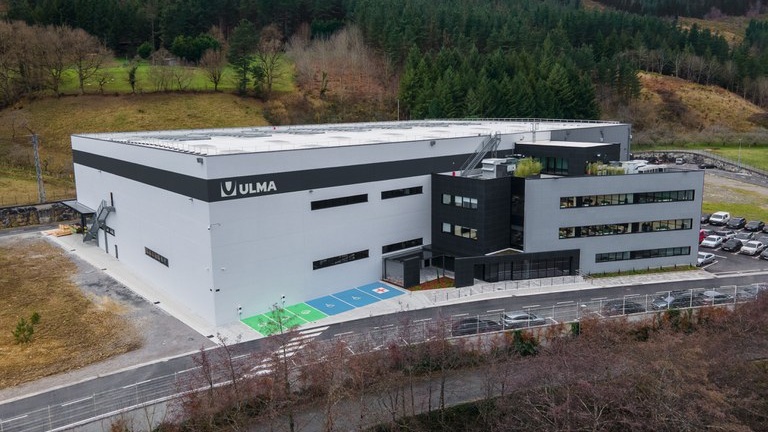Packaging
Guaranteed fresh: top six produce packaging trends for 2023
ULMA explores six essential produce packaging trends for 2023 to help you optimize your customers? experience and deliver a top-quality product to set you apart. 1) Produce packing trend: technology integration Produce packaging innovation has seen exponential growth over the past decade due to new technological developments. With advancements in packaging substrates, expansion opportunities into new market segments, and changing ownership dynamics, the consumer journey and produce packaging production process have seen unprecedented improvement. As you continue to integrate technological solutions, you can use them to reach higher marketing and efficiency plateaus and streamline your production. For produce packaging in 2023, more companies are turning leading-edge solutions such as:
22 December, 2022
ULMA PACKAGING explores six essential produce packaging trends for 2023 to help you optimize your customers experience and deliver a top-quality product to set you apart. 1) Produce packing trend: technology integration Produce packaging innovation has seen exponential growth over the past decade due to new technological developments. With advancements in packaging substrates, expansion opportunities into new market segments, and changing ownership dynamics, the consumer journey and produce packaging production process have seen unprecedented improvement. As you continue to integrate technological solutions, you can use them to reach higher marketing and efficiency plateaus and streamline your production. For produce packaging in 2023, more companies are turning leading-edge solutions such as: Smart Packaging TechnologyCompanies realize the intrinsic value of leveraging technology-enabled solutions QR codes, Near-Field Chip (NFC), and smart labels to improve the product experience for the end user. You can tailor that engagement by providing the most information about your company and connect with the customer online through their devices. Integrating smart packaging technology gives you the flexibility to offer the top forms of media and product marketing, including video, social media, and your brand story, seamlessly to build trust and customer loyalty. Production automationThe concept of production automation in produce packaging is not ground-breaking. However, in the wake of the Great Resignation 2022s ongoing labor crisis and the subsequent lack of workers to fill production lines spots, automation is taking center stage as one of the New Years most important produce packaging trends. You can integrate automation into every aspect of produce packaging, from primary product loading, handling, collating, and conveying to secondary packaging processes such as inspection, crating, weighing, and labeling (which can often be mundane and repetitive). Even palletizing is becoming fully automated in plants across every sector. Adopting automation alleviates labor challenges, reduces labor spending by millions, and shows return on investment in less than TWO years. Plus, fully automated packaging is largely contactless and hands-free, an important consideration in the wake of new post-pandemic food safety standards. Product tracking & controlIn addition to production automation, technology can be essential in tracking and controlling the numerous factors that affect your produce. Temperature, pH, fermentation data these elements help to guarantee flavor, freshness, and quality, and maintain compliance with national health requirements. By integrating advanced technology into your produce packaging, you can better maintain and monitor these factors, and stay in control from farm to table more effectively. 2) Produce packaging trend: Food safety Experts predict that the Produce Packaging Market will reach a valuation of $42.69 billion by 2027. This estimate is in large part due to the growth of whole and fresh-cut produce, as consumers continue to seek out healthier food options and ingredients. This also means the customers quest for a healthier lifestyle and better food options almost guarantees a strong correlation between new produce packaging technologies and innovations in food safety. In the wake of the pandemic, in 2023, the ultimate goal of producers will be to preserve the shelf life of produce items and maintain the highest freshness, integrity, and hygiene standards. These efforts help avoid waste, keep customers happy, and improve overall production success through more meticulous processes and reputation preservation. To meet these goals, producers must focus on their produce packaging elements that ensure no contamination. These can include airtight lids and films from tray sealing and secure vacuum-sealed thermoforming, as well as tamper-proof seals and other measures. Companies are even going so far as to introduce and utilize temperature-controlled packaging to assure produce is delivered as described, without damage or spoiling. These efforts can safeguard your companys success, trustworthiness, and brand identity and save you more by preventing reprocessing. 3) Produce packaging trebd: Sustainability Sustainability is the packaging worlds newest darling and the buzzword youll hear in every conversation concerning future trends. And it deserves to be. Consumers are waking up to global problems, such as large-scale pollution and climate change, and not asking but demanding more eco-friendly products and processes in all their purchasing experiences. Produce packaging sits at the top of that list. Factors like integrating recycled materials, cutting down on waste, and extending produce shelf life will only continue to gain traction into 2023, as consumers recognize that all packaging and production leave an eco-footprint. Producers will be tasked with promoting their overall sustainability yet simultaneously maintaining produce shelf life and freshness for the consumer experience. For instance, customers often look at cucumbers wrapped in plastic as wasteful. However, encasing them in thermoformed recyclable plastic can extend the shelf life from 3-4 days to 15 days at a time. This process is better for food waste and more practical for the supply chain. This example emphasizes the use of sustainable packaging materials rather than the elimination of produce packaging materials for the New Year. Customers are already showing their support by increasing their willingness to spending up to almost 70% with companies that utilize sustainable materials. Popular green packaging for 2023In response, producers and production are evolving as sustainable alternatives to traditional clamshell and other plastic packaging take center stage. Produce packaging has seen a dramatic rise in the use of corrugated cardboard for fruits, vegetables, and greens for both primary and secondary packaging. Additionally, paperboard trays, such as G. Mondinis PaperSeal, in vertical farming and other produce packaging innovations across tray sealing applications are quickly becoming the preferred packaging options as well. The importance of sustainable packaging in productionWhy such a dramatic push for eco-friendly packaging alternatives now? Along with consumers, many packagers see harmful plastic packaging for natural produce as counterintuitive. As produce packaging trends for sustainable alternatives like bioplastics continues, CPG companies that opt for recyclable, reusable, or compostable packaging will see better sales and adoption numbers overall than their competitors. These trends arent simply organic occurrences recognized by the manufacturing sector. These changes are backed by factual data and expert predictions: - Food and produce packaging (including flexible, rigid, and paper coating) was the largest market segment for bioplastics, accounting for approximately 1 million tons in 2021 - Global pulp and paper production will reach an unprecedented 490 million tons in 2023 - Shipping logistics tech giant Pitney Bowes predicts global parcel shipping volume will surpass 100 billion pieces in 2023 - The United States is set to surpass China as the largest producer of pulp and paper products over the next two years Higher production of pulp and paper products, investments in circular economy development, and refining produce and food packaging will continue to be highlighted to battle adverse climate effects and provide eco-friendly packaging to meet higher customer demand.











